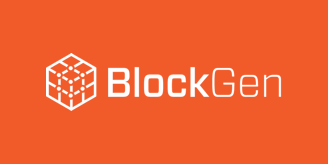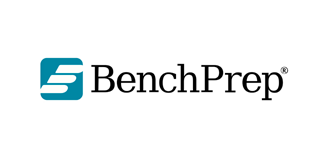
BlockGen (Stratumsphere) is an innovative platform for cryptocurrency mining businesses looking to rent or lease their mining farm's hashpower to their customers under their own branding and business structure. Stratumsphere is provided in a Software-as-a-Service (SaaS) format, and can handle rentals, failover, monitoring, notifications, and provisioning of your mining farm, all in an easy-to-use web application.
What were your team’s devops challenges and pain points prior to using Sematext?
We have a SaaS product that has a frontend, backend, and database, but that’s where the similarities stop with our product compared to other SaaS businesses. When our customers provision a new resource for their cryptocurrency mining hardware to connect to, we launch a new set of application containers for that specific customer’s team.
As our customer base grows, that’s a plethora of various app containers running across a number of different hosts and locations that are constantly talking to each other. Question was how are we going to monitor the health of all this at once and log the data effectively, especially with autoscaling and everything else associated with our container orchestration platform and infrastructure.
It is individual mining hardware such as Bitcoin ASIC miners or Ethereum GPU miners that are connecting to the customer’s resource that triggers events within our software. A single event can trigger data propagation from mining hardware to the containers and from containers into the central backend server; then back again.
These events are then analyzed and it is determined if miner failover on the end-user rental needs to occur or if an issue needs to be presented to our customer through the web app so they can correct it within their facility. If it’s a multi-megawatt mining facility with 1000’s of cryptocurrency miners connected at once, you are talking 10’s of thousands of different events per hour being recorded.
How do we accurately diagnose an issue or failure in our software or systems with these many events going on at once?
We looked into running our own Elastic Stack, and quickly realized that was a job and specialty within itself. We are a small startup and every dollar counts. Wasting precious and expensive sysadmin time on managing things far out of our project scope really isn’t an option.
What were your requirements and considerations for monitoring and / or logging solutions?
No one on our team had used a third-party logging/monitoring service before, but we had a good idea of what we wanted. Scalability, agileness, ease of use, Kibana, and a team system.
I wouldn’t say our requirements were strict. We work in cryptocurrency mining so we are used to conventional IT products/services not fitting our needs to begin with. To be honest, we were more or less just expecting something that worked OK but not great.
We looked into running our own Elastic Stack, and quickly realized that was a job and specialty within itself. We are a small startup and every dollar counts. Wasting precious and expensive sysadmin time on managing things far out of our project scope really isn’t an option.
 Zach Aufort
Zach Aufort
BlockGen CEO
What made you choose Sematext?
It fits all of our needs and wants perfectly when we ran the trial. Our team did not have to fight the interface, or change the way our data was flowing. It just worked as we wanted it to, end of story. We had trouble with some conventional IT products/services, but this was not the case with Sematext. It works out great and we are glad we found it.
What problems did Sematext solve for you?
At first, we were able to accurately diagnose and fix several bugs and issues that had been haunting us for awhile. Eventually, we turned the logging verbosity up significantly and starting tracking trends whenever an issue would occur. If there is an issue, a notification gets sent to our Slack channel and we have the issue fixed before our customers even notice it.
Please share some insight into your implementation process and transition to Sematext.
Implementation was fast and easy. All of our applications are built with Docker and we utilize Rancher to manage all of these containers across various environments. Sematext is listed in the Rancher catalog. We input the SPM and Logsene tokens, launched the container and within a few minutes our logs and infrastructure data was on Sematext platform.
Sematext was our first real monitoring/logging tool so I wouldn’t call it a transition. In terms of learning curve, we had most of the platform figured out in a few hours.
What was the outcome and which product feature(s) do you find most helpful?
Sematext has directly improved the quality of Stratumsphere with custom alert rules and Logsene w/ Kibana Logging management.
Anything else you would like to add?
Our SaaS product is called Stratumsphere:
https://stratumsphere.io/
You can read up on the features, checkout the video, demo, and other items on our website.
Challenges before Sematext
- no previous third-party logging/monitoring service experience
- conventional IT products/services not fitting needs
- plethora of various app containers across different hosts and locations
- how to monitor infra health and log the data effectively
Favorite Sematext features
- implementation was fast and easy
- custom alert rules with Kibana
- logging verbosity and trends tracking
- notification gets sent to our slack channel
Other Case Studies

Benchprep Case Study
Benchprep is a pioneer in the modern learning space, digitally transforming professional learning.

Dawn Patrol Case Study
The App that makes your Apple Watch a Surf Watch. Track your waves, Relive your surf and Share your session

ATLIST Case Study
Web platform which helps independent properties enhance the guest experience and maximize profit.